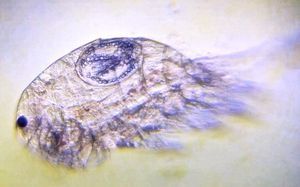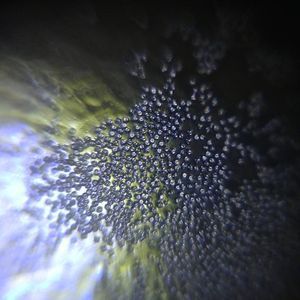Foldscope Day 1: How a Citrus Tree Makes its Scent
 Dec 26, 2015 • 4:31 AM UTC
Dec 26, 2015 • 4:31 AM UTC Unknown Location
Unknown Location 140x Magnification
140x Magnification Microorganisms
Microorganisms
aatish
Learn about the author...
6posts
3comments
1locations
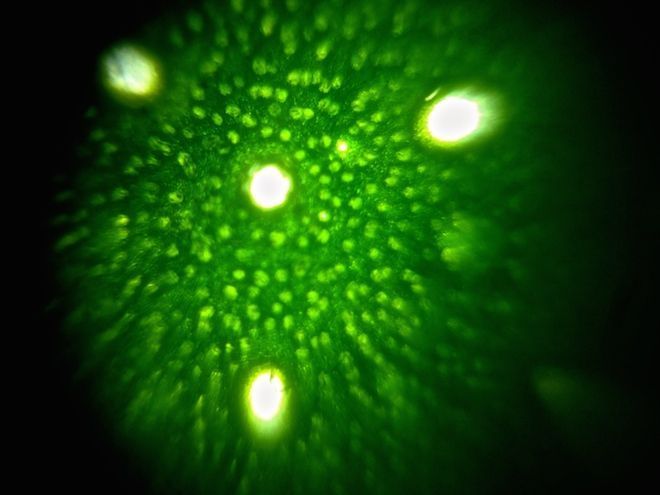
Hello there. I’m Aatish , a science blogger, and I’m super excited to get my hands on a foldscope and connect with the foldscope community here.
I assembled the kit yesterday, and then plucked a leaf from a Mandarin orange tree in my backyard at home in Delhi. According to this source , this plant grows widely in India and was apparently brought here from China in the 8th century.
I assembled the kit yesterday, and then plucked a leaf from a Mandarin orange tree in my backyard at home in Delhi. According to this source , this plant grows widely in India and was apparently brought here from China in the 8th century.
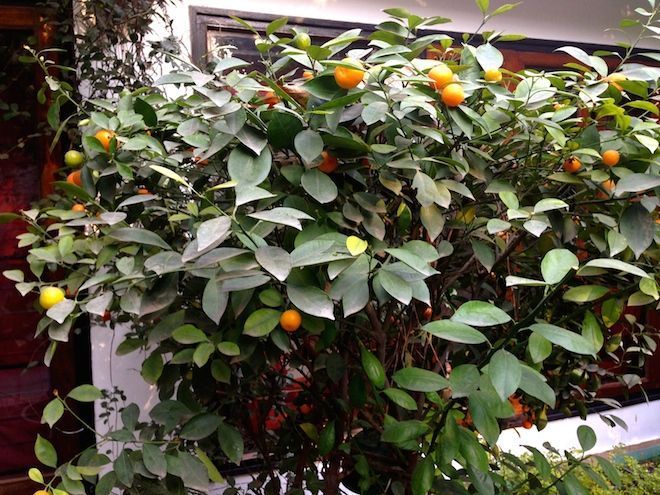
Here’s a closer look at its leaves.
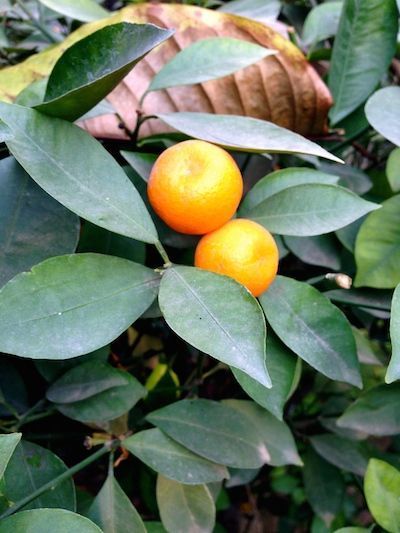
Beautiful, isn’t it? I love this tree. The first thing I noticed on plucking the leaf is its wonderful citrus smell. I cut out a small chunk of the leaf, stuck it on a slide, and slipped it under the foldscope. Here’s what I saw.
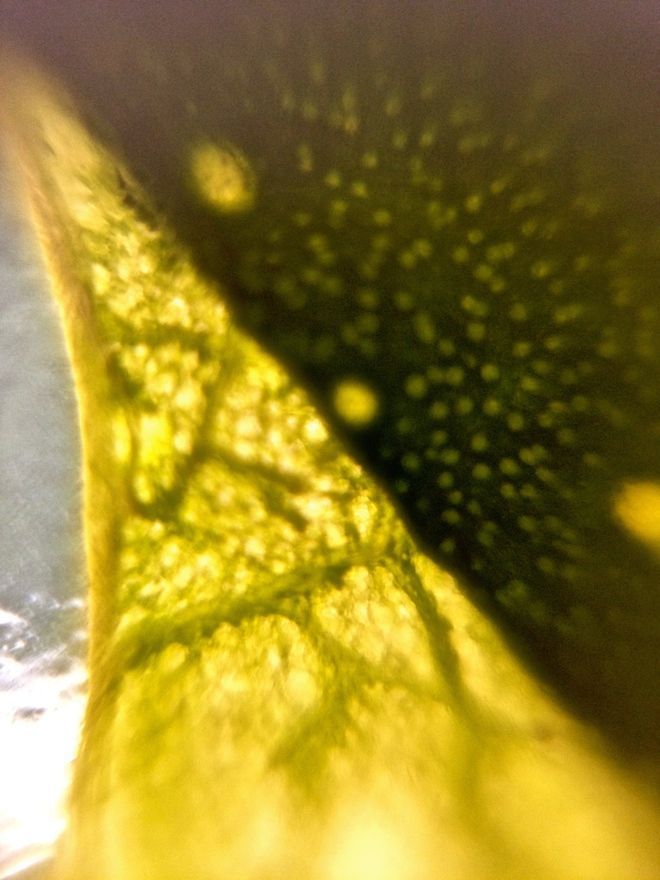
You’re looking at the edge of where I cut the leaf. Here’s a closer look at the surface of the leaf (towards the top right.)

I was kind of mesmerized by this, and tweeted out a question. (Click the video to see what I was looking at.)
Checking out a leaf from my backyard under the #foldscope . Are those stomata — the pores through which it breathes? pic.twitter.com/ChJvFWSWHw
— Aatish Bhatia (@aatishb) December 25, 2015
The thing that puzzled me were those holes. There are two kinds, the little ones, and the big ones that seem to almost cut right through the leaf — you can see the light shining brightly through. I was curious what was going on here. At first I thought these were stomata (the air-holes through which a leaf breathes), but Manu pointed out that those are much smaller. So that wasn’t what I was seeing.
And then a friend on twitter solved the puzzle:
@aatishb@PrakashLab Those are gland dots found in most citrus/Rutaceae leaves. The lime smell…
— T R Shankar Raman (@mizoraman) December 25, 2015
Isn’t that neat? So the dots I’m looking at are the glands from where that delightful citrus scent emanates. The technical term for these structures are pellucid dots , so if you want to read more about them, that’s the term to google for. And you can read more here about the chemistry of this scent, and the various chemical compounds that create this unique fragrance.
I’m really happy with my first day using the foldscope. This is my first time owning a microscope (something I’ve long wanted to get my hands on) and the experience is kind of blowing my mind.
Questions
Here are some more questions I was left with after this experience:
What are those larger holes? How are they different from the little dots? Could I see the stomata (air-holes) of this leaf if I used the high magnification lens? I tried this out and took a short video, but found it a little hard to focus and couldn’t get a clear sense of what I was seeing. Need to work on this. How similar are these gland dots in different citrus leaves? There’s an orange and a lime tree in my backyard as well, I could try checking out their leaves too… Looking forward to hearing your thoughts, and to more exploring!
Checking out a leaf from my backyard under the #foldscope . Are those stomata — the pores through which it breathes? pic.twitter.com/ChJvFWSWHw
— Aatish Bhatia (@aatishb) December 25, 2015
The thing that puzzled me were those holes. There are two kinds, the little ones, and the big ones that seem to almost cut right through the leaf — you can see the light shining brightly through. I was curious what was going on here. At first I thought these were stomata (the air-holes through which a leaf breathes), but Manu pointed out that those are much smaller. So that wasn’t what I was seeing.
And then a friend on twitter solved the puzzle:
@aatishb@PrakashLab Those are gland dots found in most citrus/Rutaceae leaves. The lime smell…
— T R Shankar Raman (@mizoraman) December 25, 2015
Isn’t that neat? So the dots I’m looking at are the glands from where that delightful citrus scent emanates. The technical term for these structures are pellucid dots , so if you want to read more about them, that’s the term to google for. And you can read more here about the chemistry of this scent, and the various chemical compounds that create this unique fragrance.
I’m really happy with my first day using the foldscope. This is my first time owning a microscope (something I’ve long wanted to get my hands on) and the experience is kind of blowing my mind.
Questions
Here are some more questions I was left with after this experience:
What are those larger holes? How are they different from the little dots? Could I see the stomata (air-holes) of this leaf if I used the high magnification lens? I tried this out and took a short video, but found it a little hard to focus and couldn’t get a clear sense of what I was seeing. Need to work on this. How similar are these gland dots in different citrus leaves? There’s an orange and a lime tree in my backyard as well, I could try checking out their leaves too… Looking forward to hearing your thoughts, and to more exploring!
Sign in to commentNobody has commented yet... Share your thoughts with the author and start the discussion!
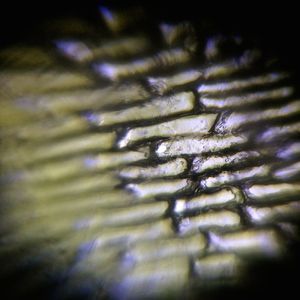
 0 Applause
0 Applause 0 Comments
0 Comments